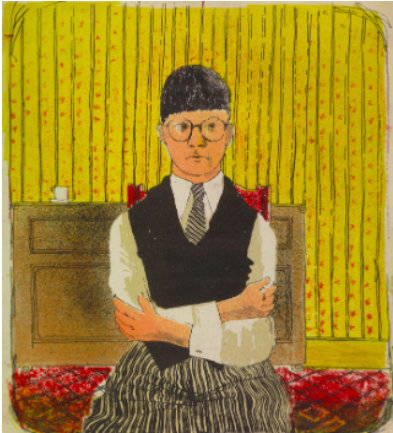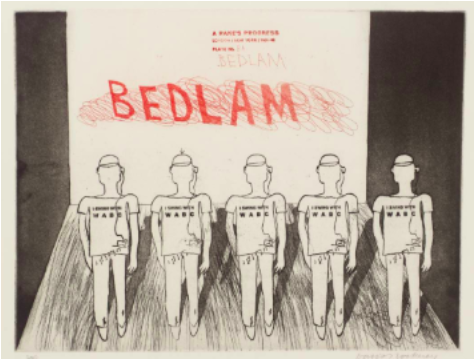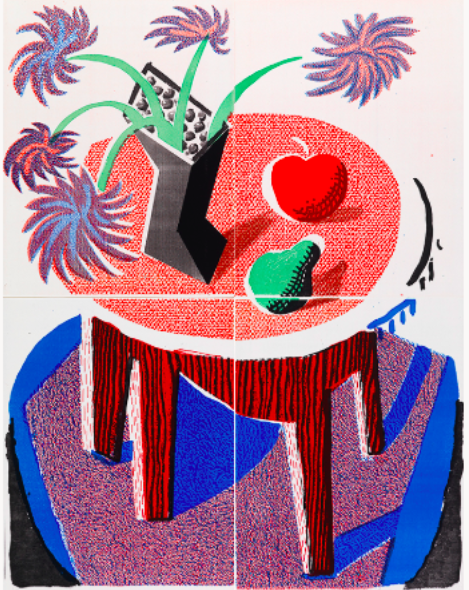Appreciating David Hockney Prints
David Hockney (b.1937) is perhaps one of the most famed and influential British artists to exist within the 20th and 21st century. Born in Bradford, Hockney attended the Bradford School of Art from 1953 to 1957 and subsequently The Royal College of Art from 1959 to 1962, which provided him with the foundations for his future in the arts. Throughout his career, Hockney has strived for, and achieved, different modes of expression through his versatile use of medium which include: painting, photography and printmaking.

Of all his methods, printmaking has played a vital role in Hockney’s artistic career and enabled him to express himself in a more graphic language. During his early years, at Bradford collage, Hockney employed the method of lithography to create prints such as Self Portrait, 1954 and later gained an appetite for experimental etching in the Graphic Department of the Royal collage of Art. The linearity of etching, together with the bold pigmentation of lithography, allowed for enormous experimental diversity within his prints and both techniques became chief parts of his oeuvre. With these methods being characterised by speed and spontaneity, Hockney found a sphere where he could allow his expressionistic style to evolve. Some of his most acclaimed and illustrious prints include etchings such as ‘The Rake’s Progress’, 1961-63, which are a series of 16 prints that mimic William Hogarth’s eighteenth-century engravings with a comical twist.

Etching and Aquatint, 1961-3
Most pertinent to Hockney’s printmaking was his exploration of machinery, which he began experimenting with in 1986. Hockney claimed that printing machines ‘offered the artist new areas and possibilities’ and for him, created a huge shift within his artistic production. During early investigations Hockney saw that the technicalities of a printing machine enabled a more direct and instantaneous print compared to previous approaches. More importantly, the properties of toner, as opposed to standard ink, result in an unreflective image which to Hockney, gave the colour black a ‘richness and mystery almost like a void.’ This inspired his first major series of ‘home-made prints’ in 1986 where he utilised this novel machinery.

Till this day David Hockney prints utilise new technology to explore and expand his interests in printing. In 1988 he began to use fax machines as a modern device to share his art. Following the development of the IPhone and creative apps such as brushes, he was able to design innovative art which developed his printmaking medium. To date, Hockney has produced over 500 prints and still feels that the ‘age of mechanical reproduction’ has not been reached. It is within this world of printmaking that Hockney has found clarity of expression, and thus continues to discover and subsequently produce.
